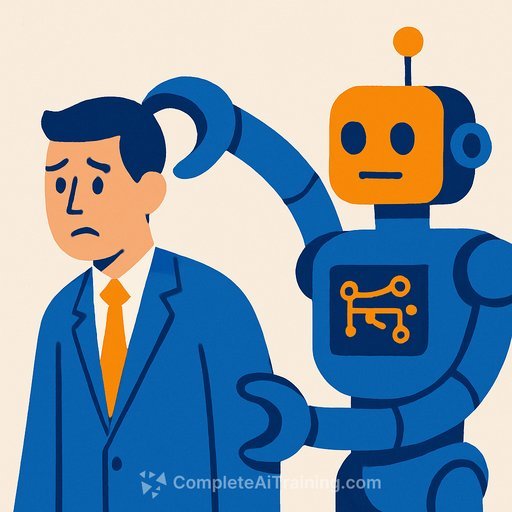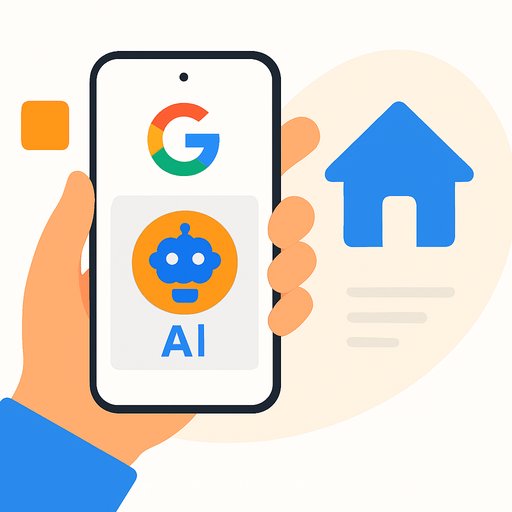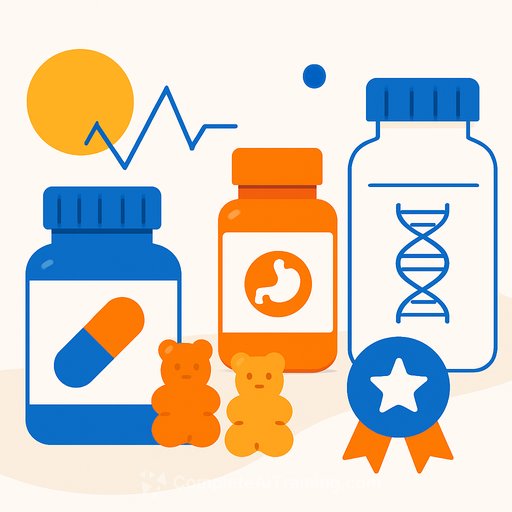Machines will take millions of jobs - but they'll never lead like a human can
AI will eliminate roles and create even more. The latest WEF report projects 92 million jobs displaced by 2030 and 170 million created - a net gain of 78 million. History points the same way: after decades of automation, the 2024 global unemployment rate was lower than in 1991.
For product leaders, the signal is clear. Disruption is here, but so is opportunity. The work changes. The demand for builders who can pair human judgment with machine scale grows.
The four forces pushing product teams toward AI
- AI automation: Almost 60% of firms (and ~85% of large firms) implemented automation in the last year. Repetitive work is getting absorbed by systems.
- Economic pressure: Efficiency wins budgets. AI delivers measurable cycle-time cuts, lower unit costs, and faster iteration loops.
- Green transitions: Energy costs and climate targets are steering roadmaps toward smarter, leaner operations.
- Demographics: Aging populations expand caregiving needs and demand new service models and team structures that tech alone can't run.
These forces are already changing hiring plans, portfolio bets, and board expectations. Treat them as constraints to design with, not trends to watch.
Where product work is growing
We're past hype cycles. Spend is moving to durable value, with AI investments projected to reach $632B by 2028. That shift favors product teams that build systems that learn, adapt, and earn trust.
- AI-native product roles: AI Product Managers, AI UX Designers, Prompt Engineers. Tooling like Copilot, Einstein, and Duet AI is table stakes; the edge is in problem framing, data leverage, and continuous model feedback.
- AIOps and platform: MLOps Engineers, AI Cloud Architects, Observability Engineers, Incident Prediction Analysts. The cloud moves from elastic to predictive; resilience becomes a product feature.
- Trust and safety: AI Risk Officers, LLM Red Teamers, AI Cyber Analysts. Regulations such as the EU AI Act and frameworks like the NIST AI RMF make explainability and compliance a competitive asset.
- Data and knowledge: Data Engineers and Knowledge Designers driving RAG pipelines, vector stores, and knowledge graphs. Retrieval quality becomes as critical as model choice.
- Domain hybrids: PMs and ICs in finance, healthcare, legal, and HR who pair domain fluency with AI proficiency. These roles set the pace of change in each sector.
What this means for product development
- Redefine PM, design, and engineering charters around AI-enabled outcomes: time-to-value, quality lift, adoption, and risk posture.
- Add an AI PM track: problem selection, data strategy, model lifecycle, offline/online eval, and human-in-the-loop design.
- Shift UX to explainability and trust design: transparency, recoverability, uncertainty cues, and consent patterns.
- Stand up an LLMOps/AIOps backbone: feature stores, evaluation suites, prompt/version management, guardrails, and observability.
- Instrument everything: collect user feedback, intervention rates, failure modes, and cost-per-outcome. Make dashboards part of daily standups.
- Build a dual-track roadmap: value track (user impact) and safety track (risk, compliance, abuse prevention). Both ship every sprint.
- Run red teaming as a routine, not an event. Treat jailbreaks and data leakage like performance regressions.
- Adopt runbooks for incidents involving AI behavior. Root-cause includes data drift, prompt rot, and retrieval decay.
- Update hiring loops: probe for product judgment under uncertainty, data instincts, and collaboration with platform teams.
- Teach everyone prompt patterns and evaluation basics. Make "model thinking" a team skill, not a specialization.
Humans still lead
AI scales execution. It doesn't set direction, hold the line on ethics, or unify a team through change. That's leadership.
- Judgment: Decide where AI belongs, where it doesn't, and when to stop even if a metric says "go."
- Story: Paint a clear future and sell it internally. Fear drops when people see their role in what's next.
- Integration: Bridge technical, legal, finance, and ops. Replace silos with shared goals and common metrics.
A 90-day plan for product leads
- Weeks 1-2: Pick two AI use cases with clear ROI and low-risk failure modes. Define success metrics, guardrails, and evaluation criteria.
- Weeks 3-6: Ship a narrow pilot with human oversight. Add observability, feedback capture, and rollback paths. Start a weekly risk review.
- Weeks 7-12: Expand to a second team. Introduce AI PM responsibilities, trust-by-design patterns, and on-call runbooks for AI incidents.
If your team needs structured upskilling by role, see the curated paths here: AI courses by job.
Bottom line for product
AI will absorb repetitive tasks and create higher-leverage work. The teams that win combine human direction, measurable value, and systems that learn in production.
Machines can execute at scale. Leadership - vision, ethics, and accountability - stays human.
Your membership also unlocks:






